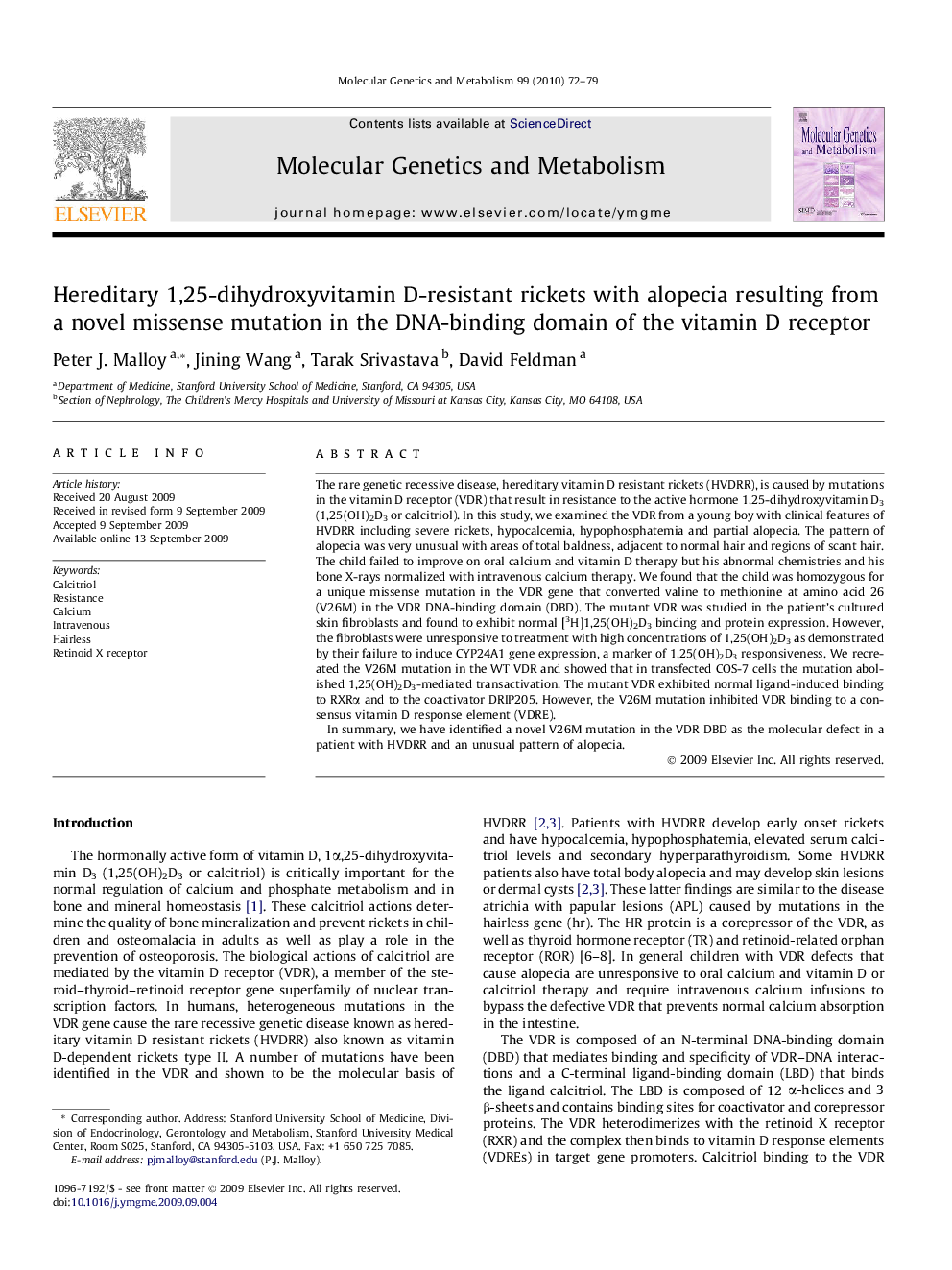| Article ID | Journal | Published Year | Pages | File Type |
|---|---|---|---|---|
| 1998588 | Molecular Genetics and Metabolism | 2010 | 8 Pages |
The rare genetic recessive disease, hereditary vitamin D resistant rickets (HVDRR), is caused by mutations in the vitamin D receptor (VDR) that result in resistance to the active hormone 1,25-dihydroxyvitamin D3 (1,25(OH)2D3 or calcitriol). In this study, we examined the VDR from a young boy with clinical features of HVDRR including severe rickets, hypocalcemia, hypophosphatemia and partial alopecia. The pattern of alopecia was very unusual with areas of total baldness, adjacent to normal hair and regions of scant hair. The child failed to improve on oral calcium and vitamin D therapy but his abnormal chemistries and his bone X-rays normalized with intravenous calcium therapy. We found that the child was homozygous for a unique missense mutation in the VDR gene that converted valine to methionine at amino acid 26 (V26M) in the VDR DNA-binding domain (DBD). The mutant VDR was studied in the patient’s cultured skin fibroblasts and found to exhibit normal [3H]1,25(OH)2D3 binding and protein expression. However, the fibroblasts were unresponsive to treatment with high concentrations of 1,25(OH)2D3 as demonstrated by their failure to induce CYP24A1 gene expression, a marker of 1,25(OH)2D3 responsiveness. We recreated the V26M mutation in the WT VDR and showed that in transfected COS-7 cells the mutation abolished 1,25(OH)2D3-mediated transactivation. The mutant VDR exhibited normal ligand-induced binding to RXRα and to the coactivator DRIP205. However, the V26M mutation inhibited VDR binding to a consensus vitamin D response element (VDRE).In summary, we have identified a novel V26M mutation in the VDR DBD as the molecular defect in a patient with HVDRR and an unusual pattern of alopecia.
